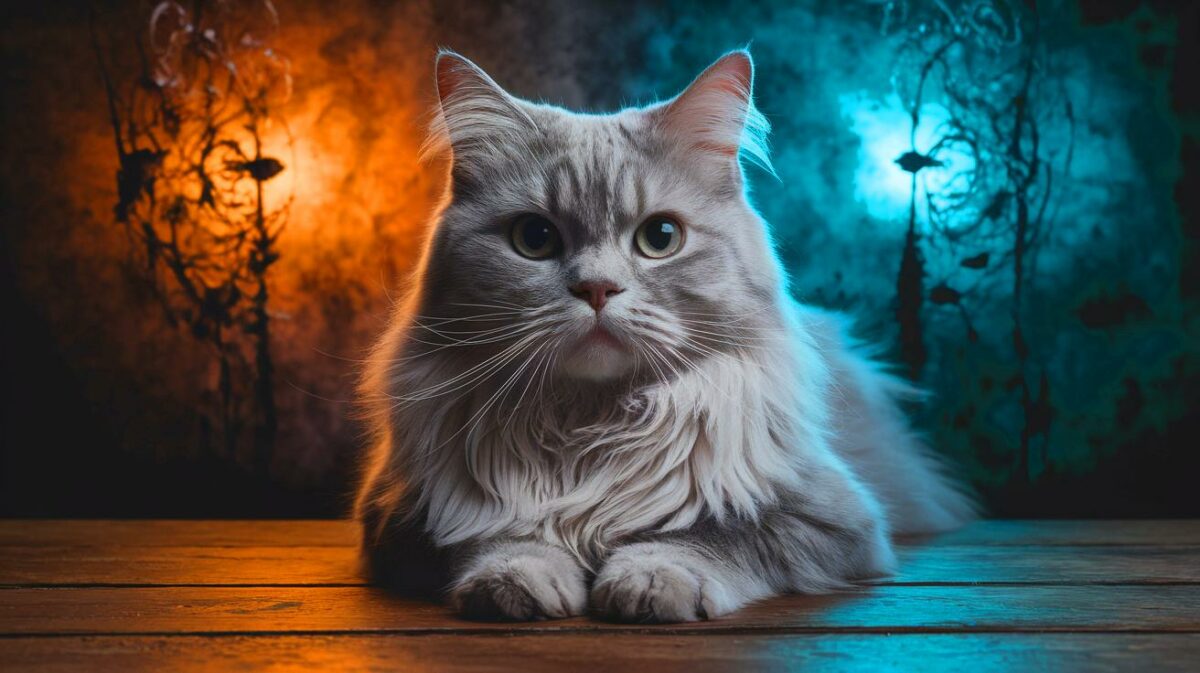| IN A NUTSHELL |
|
In the fascinating world of feline genetics, a groundbreaking discovery is making waves across the globe. A new fur color, termed “salmiak” or “salted licorice,” is captivating both cat enthusiasts and geneticists alike. This unique color pattern, starting as black at the base and fading to white at the tips, is the result of a recessive genetic mutation. The discovery, recently published in the journal Animal Genetics, has sparked a flurry of interest and investigation among scientists and pet owners. This article delves into the origins, research, and genetic secrets behind this intriguing phenomenon.
The Origins of Salmiak Fur
The journey of the salmiak fur began in the picturesque village of Petäjävesi, Finland, as early as 2007. The name “salmiak” is inspired by a popular regional confection, which hints at the cultural significance of the discovery. By 2019, the unique coloration captured the attention of a dedicated team of experts led by renowned feline geneticist Heidi Anderson. These cats are often noted for their distinctive white chests and shaded accents, reminiscent of the classic tuxedo cats.
Heidi Anderson herself expressed her excitement over this enigmatic fur pattern: “These coats have garnered admiration for years. It is incredibly thrilling to finally have a genetic explanation for them.” This sentiment underscores the scientific and aesthetic value of the salmiak discovery, further fueling the curiosity of the scientific community and feline aficionados worldwide.
Research Into the Salmiak Phenomenon
The exploration of this remarkable fur color was spearheaded by geneticist Hannes Lohi and his team at the University of Helsinki. Collaborating with a genetic testing company and dedicated cat owners and breeders, the team conducted an extensive study. Their research was supported by the university’s biobank, which houses over 5,000 blood samples from more than 40 feline breeds.
To unravel the mystery, samples were collected from five cats originating from Petäjävesi. Initially, researchers speculated that the salmiak color might be linked to a gene responsible for white fur in some cats. However, they discovered that the base colors of these cats remain black and orange, with other shades resulting from combinations or diluted versions of these colors. This finding challenged their initial assumptions and opened a new chapter in feline genetic research.
The Genetic Secret of Salmiak Fur
The study revealed that the elusive gene responsible for the salmiak coloration is none other than the KIT gene, known for its role in producing white patterns in various animals. A significant breakthrough was made when researchers identified a missing sequence downstream of the KIT gene. To validate this hypothesis, a test was conducted on 181 cats, confirming that all salmiak-coated cats possessed two copies of the recessive gene.
Heidi Anderson highlighted to Animal Genetics the discovery of the missing sequence: “There was a large segment of sequence missing downstream of the KIT gene.” Her colleague, Greg Barsh, further elaborated: “One of the fascinating aspects of the study is that it reveals a highly sophisticated mechanism by which the KIT gene is typically regulated.” This insight into the genetic mechanics offers a deeper understanding of the complexities of genetic mutations in animals.
The role of biological control in achieving sustainable agriculture goals
The Future of Feline Genetics
As the scientific community continues to explore the genetic intricacies of the animal kingdom, the discovery of the salmiak fur pattern represents a significant milestone. It not only enriches our understanding of feline genetics but also underscores the potential for future discoveries. The salmiak phenomenon invites further research into how genetic mutations can impact the appearance and characteristics of animals, offering new avenues for scientific inquiry.
As we ponder the implications of these findings, we are left to wonder: what other genetic mysteries lie hidden within the tapestry of nature, waiting to be unraveled by the keen eyes of science?
Did you like it? 4.3/5 (24)









Wow, a new color in cats? That’s pawsome! 🐾
Is this color only found in specific breeds or any cat can have it?
So cool! I wonder if the salmiak fur color changes with age. 🤔
Is there a way to test my cat for this gene without going to a lab?
Great article, but I’m skeptical about the “mysterious” part. Science always finds an answer eventually!
Can other animals have this salmiak color, or is it just cats?
Thank you for sharing this discovery! It’s fascinating to see how genetics can create such unique features. 😊
Lol… The photo provided with the article looks like some AI fill in crap… That’s absolutely Not a Salmaik…the real animals are gorgeous with like a salt and pepper look….